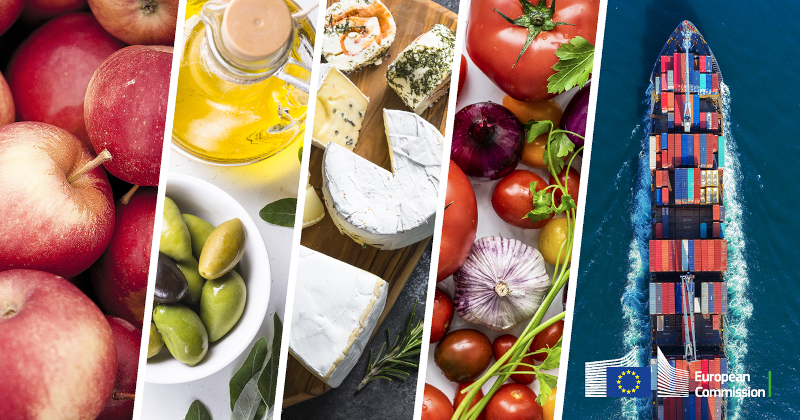
Keeping up its upward trend from September 2023, the monthly EU agri-food trade surplus reached its highest level over the last three years in October 2023 with €6.9 billion. The cumulative trade balance from January to October 2023 reached €58 billion, which is €10.6 billion higher compared to the same period in 2022. These are the main findings of the latest monthly agri-food trade report published today by the European Commission.
Exports
In October 2023, EU agri-food exports continued growing for the third consecutive month. It increased to €19.9 billion, a 5% increase month-on-month. Cumulative exports since January have totalled €190.8 billion, € 2.1 billion (+1%) higher than for the same period last year.
In terms of exported products, cereal preparations and milling products exports increased by 8% compared to 2022 (+ €1.4 billion), followed by fruit and vegetable preparations (+ €1.3 billion) and confectionary and chocolate (+ €1.1 billion). The value of cereal exports decreased by 15%, due to reduced prices, but the volumes exported increased by 5%.
EU cumulative exports from January to October 2023 increased the most to the United Kingdom (+ €3.3 billion, +8%), Türkiye (+ €835 million, +26%) and Ukraine (+ €447 million, +19%), whereas EU exports to the US decreased by 8% (-€1.9 billion), Egypt (- €858 million, -35%), Algeria (-€681 million, -22%) and Iran (-€576 million, -59%).
The top three destinations for EU agri-food exports between January and October 2023 remained the United Kingdom, the United States, and China.
Imports
In October 2023, EU agri-food imports were worth €13 billion, an increase of 6% compared to the previous month, but still 17% below their level in October 2022. Cumulative imports from January to October 2023 reached €132.8 billion, a 6% reduction compared to the same period in 2022 (‑€8.5 billion).
In term of imported products, the cumulative import value of tobacco products (+€1 billion, +35%), sugar, and isoglucose (+€831 million) have increased. The value of imports of vegetables also increased, as well as those for olive oil. However, significant reductions in import values were observed in oilseeds and protein crops, vegetable oils, non-edible products, coffee, tea, cocoa and spices, and margarine.
Agri-food import values from Ukraine in September and October 2023 returned closer to their 2021 level, after reaching a peak in the second half of 2022 and the beginning of 2023. Cumulative imports from January to October are 1% higher (+ €100 million) compared to 2022, with increases in cereals, sugar and poultry, while decreasing oilseeds and protein crops and vegetable oils.
Import values from Brazil (‑ €2.2 billion, ‑13%, mostly in soya beans, coffee and maize), Argentina (‑ €1.6, ‑29%, mostly soya meals), China (‑ €1.1 billion, ‑13%, mainly non edible products) and Australia (‑ €1 billion, ‑31%, mostly rapeseed) can also be observed from January to October 2023. In that period, EU imports from Türkiye (+€885 million) and Egypt (+€484 million) increased, driven by fruit and nuts and vegetables.
More insights as well as detailed tables are available below in the latest edition of the monthly EU agri-food trade report.
Details
- Publication date
- 19 January 2024
- Author
- Directorate-General for Agriculture and Rural Development
- Location
- Brussels
